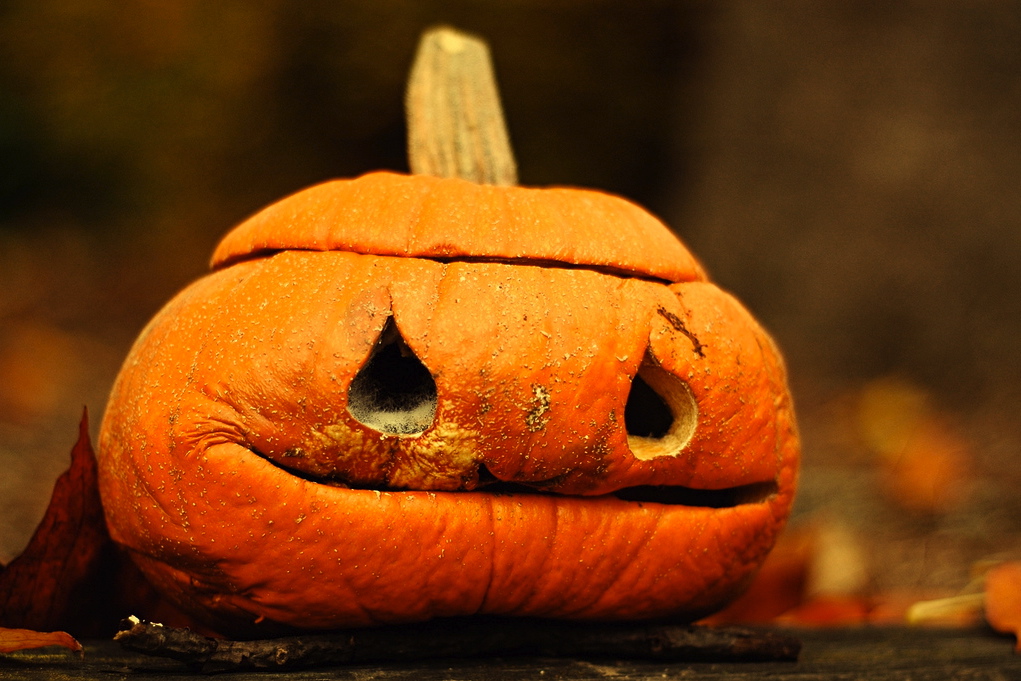View From the Garden: The History of the Jack-o'-Lantern

This last Saturday my husband and I went to the South Fork Natural History Museum, a great local resource. We looked at the installations inside, housing examples of some of our local flora and fauna, including an interactive salt water tank where one can get “up-close and personal” with animals that inhabit the shallows of our bays AND a special place where one can smell a fox! Then we went into the very large field in the back that abuts the Long Pond Greenbelt Preserve…another great resource.
It was a perfect autumn day. The field was full of birds (the objects of my husband’s viewing) and a beautiful display of plants and grasses in autumn dress. With the exception of roadsides, or unless we make a point of going to an undeveloped site, we rarely see very large areas of wild plants. Though some of them have cousins in the garden, in their unhybridized form, they are delicate members in a colorful but subtle mass. I encourage you to avail yourselves of this wonderful and special place.
Colorful trees, the cooler air and that autumn smell reminds me that Halloween is coming…my favorite holiday. People have celebrated this time of year for millennia. Various customs from these celebrations have yielded our Halloween practices today. It’s commonly held that Halloween is from the Celtic tradition of Samhain (produced Sow en), a holiday signifying the end of summer, the beginning of the dark time and the end of the harvest. During this time, souls of last year’s dead can move easily between their world and this. Bonfires were kept blazing through the night and ghoulish costumes were worn to scare away a spirit trying to inhabit a live body.
During the Middle Ages when the Catholic church was moving into Ireland, to encourage conversion of the locals, the holiday of all Hallows Eve was set the day after Samhain, hence the name “Halloween.”
One of my favorite things about Halloween is jack-o’-lanterns. My husband and I carve one each every year, sometimes with guest carvers. There are so many beautiful pumpkins available that we spend a long time choosing the right one, often going from farm stand to farm stand.
A Swiss friend told me that turnips are carved for jack-o’-lanterns in Switzerland. Curious, I thought. Did they not know the proper way to do it?
After some more research, I discovered the story of jack-o’-lantern. Jack was a very mischievous man who played tricks on many people. He even played a trick on the devil when he trapped him in a tree and carved a cross into the trunk, preventing the devil from descending. A bargain was struck allowing the devil to come down for the promise of no more temptations of jack. When Jack died, he was not let into heaven because of his bad behavior and the devil did not want him either but did give a lighted coal to help him on his way. Jack carved a turnip and used it with the coal inside as a lantern lighting his never-ending journey. Hence “Jack of the lantern.” This custom arrived with the Irish immigrants during the 19th century. There were more pumpkins than turnips so they were used for Jack’s lantern.
My husband uses Sawzall and a drill to carve his pumpkin and they, unlike mine, have non-traditional faces. He likes what I think of as unusually shaped pumpkins…especially tall skinny ones. I, on the other hand like a classic shape and a traditional face. We carve them about one week before Halloween and light them on the front porch each night. I love the smell of singed pumpkin! If I’m feeling industrious, I clean the seeds…the worst part of the process…and toast them. Yum!
This is the best time of year to me. Apples, pumpkins, squash, some remaining summer vegetables, dahlias (one of my favorite flowers), blooming fall grasses, electric aconitum and more, are present in abundance. Leaves are falling and swirling as the cars run by them. Enjoy this time… winter is coming!
Jeanelle Myers is a professional gardener, landscaper and consultant. For gardening discussion you can call her at 631-434-5067.



